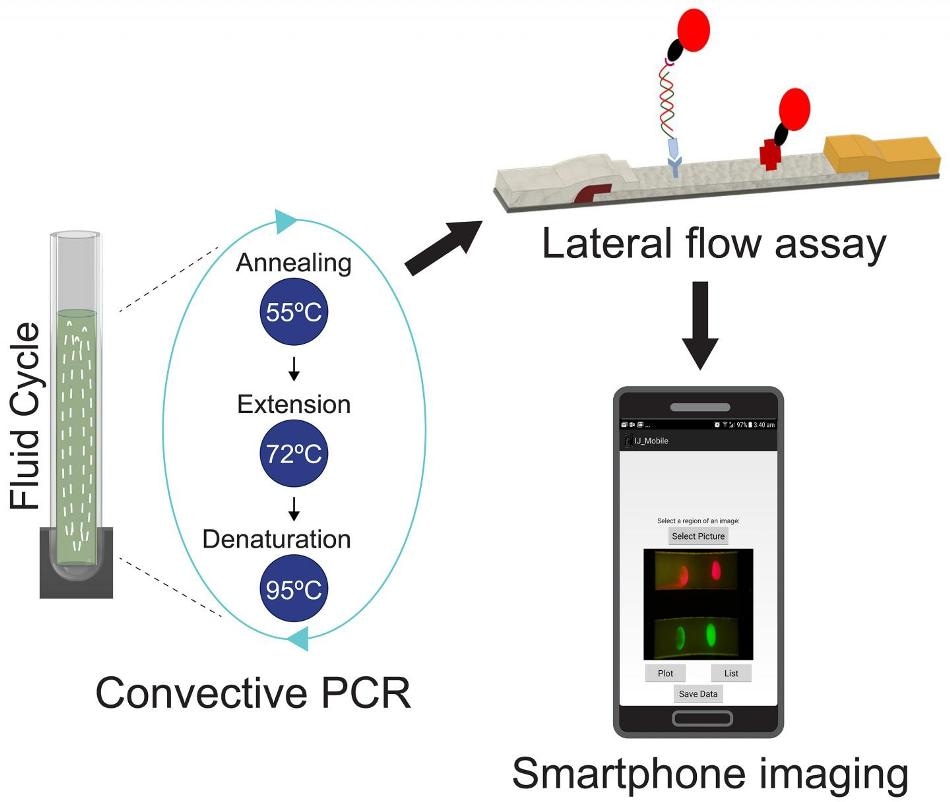Aug 6 2019
A combination of standard quantum dot nanotechnology and a smartphone camera may soon enable doctors to recognize antibiotic-resistant bacteria within 40 minutes, possibly saving the lives of many patients.
 This is a diagram depicting the analysis process. (Image credit: Sunna Lab)
This is a diagram depicting the analysis process. (Image credit: Sunna Lab)
Staphylococcus aureus (golden staph), is a general form of bacterium that causes critical and occasionally fatal conditions such as heart valve infections and pneumonia. Of specific worry is a strain that does not react to methicillin, the antibiotic of first resort, and is called methicillin-resistant S. aureus, or MRSA.
Latest reports estimate that 700,000 deaths worldwide could be linked to antimicrobial resistance, for example, methicillin-resistance. Quick identification of MRSA is vital for effective treatment, but present-day methods make it a difficult process, even within well-furnished hospitals.
Before long, however, that may change, using nothing except current technology.
Scientists from Macquarie University and the University of New South Wales, both in Australia, have shown a proof-of-concept device that employs bacterial DNA to detect the presence of Staphylococcus aureus definitely in a patient sample—and to establish if it will react to frontline antibiotics.
In a paper published in the international peer-reviewed journal Sensors and Actuators B: Chemical, the Macquarie University team of Dr Vinoth Kumar Rajendran, Professor Peter Bergquist and Associate Professor Anwar Sunna with Dr Padmavathy Bakthavathsalam (UNSW) make known a new method to verify the presence of the bacterium, using a mobile phone and a few ultra-tiny semiconductor particles called quantum dots.
Our team is using Synthetic Biology and NanoBiotechnology to address biomedical challenges. Rapid and simple ways of identifying the cause of infections and starting appropriate treatments are critical for treating patients effectively. This is true in routine clinical situations, but also in the emerging field of personalised medicine.
Anwar Sunna, Associate Professor and Head of Sunna Lab, Macquarie University
The scientists' method recognizes the particular strain of golden staph by using a technique known as convective polymerase chain reaction (or cPCR). This is an offshoot of an extensively used method wherein a small segment of DNA is copied numerous times, forming many samples ideal for testing.
Vinoth Kumar and his colleagues then expose the DNA copies to a process called lateral flow immunoassay—a paper-based diagnostic tool used to verify the absence or presence of a target biomarker. The researchers use probes equipped with quantum dots to detect two distinctive genes, that establishes the presence of methicillin resistance in golden staph
A chemical incorporated at the PCR stage to the DNA tested makes the sample fluoresce when the genes are sensed by the quantum dots—a reaction that can be caught easily using the camera on a mobile phone.
The outcome is a simple and fast technique of sensing the presence of the bacterium, while concurrently ruling first-line treatment in or out.
Although presently at proof-of-concept stage, the scientists explain their system which is driven by a standard battery is ideal for quick detection in varied settings.
We can see this being used easily not only in hospitals, but also in GP clinics and at patient bedsides.
Dr Vinoth Kumar Rajendran, Study Lead Author, Macquarie University